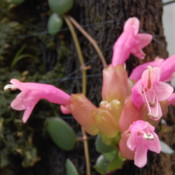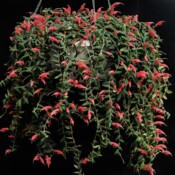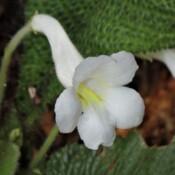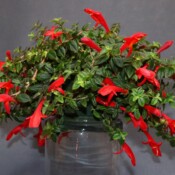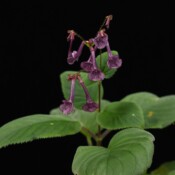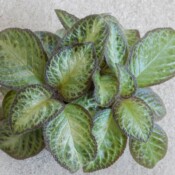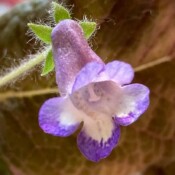Aeschynanthus “Thai Pink” is a vigorous, large growing species with vines often reaching 6-7 feet (~2m) in length in 12-18 months after being started from cuttings. The flowers are large (2 inches/5cm) and are pink in color, quite unusual for the genus. The
Advanced Search

Aeschynanthus longicaulis
This interesting cultivar is grown primarily for its attractive marbled maroon and green foliage. It has been grown and distributed under other names, including A. marmoratus and A. zebrina. With A. speciosus, it is the parent

Aeschynanthus pulcher
This form of the species A. pulcher has historically been referred to as A. lobbianus in North America, but is now understood to be part of the A. pulcher complex. A number of other species names have been synonymized under
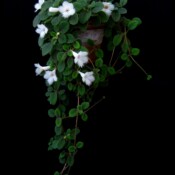
Alsobia dianthiflora
Exhibited in the 2021 virtual show of the Gesneriad Society. Alsobia dianthiflora is one of four members of its genus, and is the most compact of the group. While it can be fairly vigorously stoloniferous, the leaves are small and the ultimate size of
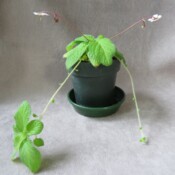
Boeica stolonifera
This interesting stoloniferous species is seldom seen in cultivation. This plant was exhibited at the 2021 virtual show of the Gesneriad Society, and is likely the first time it has been shown. Additional photos may be seen in a slideshow by clicking one of the links

Codonoboea quinquevulnera
This spectacular species would be very welcome in cultivation, but does not seem to be so as of yet. An additional photo of a plant out of flower, exhibited in the 2021 virtual show of the Gesneriad Society, can be seen here.
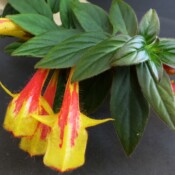
Columnea ‘Jeanne Katzenstein’
Exhibited at the 2021 virtual show of the Gesneriad Society.
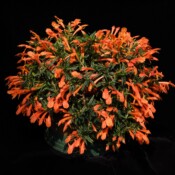
Columnea crassifolia
C. crassifolia can be extremely floriferous, as is clear from the featured image above. It was exhibited in the 2021 virtual show of the Gesneriad Society. A closer photo of the flowers of the species can be seen here.
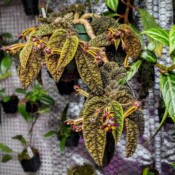
Columnea purpureovittata
Columnea purpureovittata is notable primarily for its dramatic foliage, which is dark and extremely bullate — which is to say that it has a bubbly and bumpy texture quite unlike most other members of the Columnea alliance. A well-grown basket is a
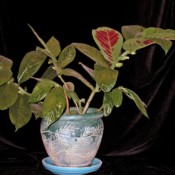
Columnea sanguinea
This is a large-growing species, with branches that can be up to a meter long. Not all specimens have the red-backed leaves (which facilitate attraction of hummingbirds), and some have orange or red calyces and flowers. The plant featured above was exhibited at the Gesneriad Society’s
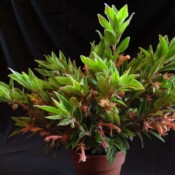
Columnea schiedeana
Columnea schiedeana is a relatively easy-to-grow species. It has a branching and spreading habit, with quite woody stems spreading horizontally from their base. It does not trail vertically. The feature plant above was exhibited in the 2021 virtual show of the Gesneriad Society. The
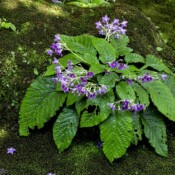
Conandron ramondioides
Conandron ramondiodes is an alpine plant that tolerates several degrees of frost (or more) with adequate snow cover or other mulch. In nature it grows on rocks with moss, in shady relatively damp locations. Like most alpine plants it will not tolerate wet circumstances
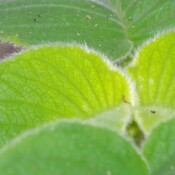
Cyrtandra argentii
Exhibited in the 2021 virtual show of the Gesneriad Society. Note the gold color on the new growth, from whence comes the specific name.
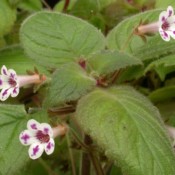
Diastema vexans
Diastema vexans is a low-growing herbaceous plant with pretty white and lavender flowers and softly hair leaves. It needs fairly warm temperatures and good humidity to thrive, but prefers lower light levels. Two of the most widely grown species in this genus are D.

Episcia ‘Alice’s Aussie’
Exhibited at the 2021 virtual show of the Gesneriad Society. This cultivar appears to be somewhat variable, with the metallic red color of the leaves lighter or darker, depending on cultural conditions. A lighter-colored plant can be seen here.

Episcia ‘Chocolate Cream’
Shown at the Spring 2004 show of the Toronto Gesneriad Society. A plant exhibited at the 2021 virtual show of the Gesneriad Society can be seen here. Note the apparently lighter-colored leaves, perhaps a function of the photograph or of culture.
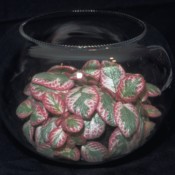
Episcia ‘Cleopatra’
Episcia ‘Cleopatra’ is a classic cultivar, introduced in 1963 as a sport of E. ‘Frosty’. Its pale pink, green and white leaf colors were a sensation, and it has been widely grown ever since. Flowers, rarely produced, are bright red. Many look-alike
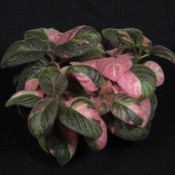
Episcia ‘Ember Lace’
Both E. ‘Ember Lace’ and E. ‘Cleopatra’ are popular pink and green-leaved cultivars. E. ‘Ember Lace’ is not as widely grown as it once was, and is not seen as frequently as ‘Cleopatra’. It must be managed carefully
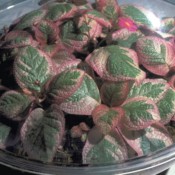
Episcia ‘Pink Dreams
This fine cultivar is much like E. ‘Cleopatra’ but its flowers are pink rather than bright orange-red. The pink looks much better with the foliage, but flowers are produced sparingly and the plant is if anything more dependent on humidity and warmth than
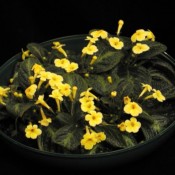
Episcia ‘Suomi’
Shown at the AGGS convention show in 2004. This remarkably floriferous specimen was greatly admired. Because of lighting conditions, the foliage appears rather dark in this photo, and the yellow flowers very bright. Other photos, which may be seen in a slideshow by clicking one of

Eucodonia ‘Adele’
E. ‘Adele’ is a hybrid by Patrick Worley, the result of the cross Eucodonia verticillata ‘Frances’ x E. ehrenbergii. The feature plant above was exhibited in the 2021 virtual show of the Gesneriad Society. Additional photos may be seen

Gesneria depressa
Exhibited at the 2014 convention of the Gesneriad Society. Additional photos can be seen in a slideshow by clicking one of the links below: A plant exhibited in the 2021 virtual show of the Gesneriad Society A front view of a flower
1 2 3 … 5 Next »

